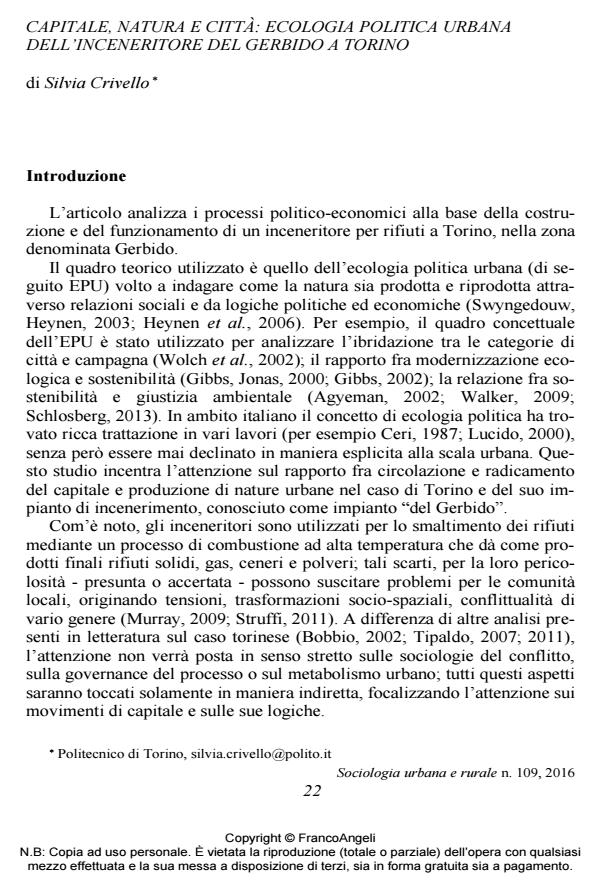Capital, Nature and the City: Urban Political Ecology of the Gerbido Waste Incinerator in Turin
Journal title SOCIOLOGIA URBANA E RURALE
Author/s Silvia Crivello
Publishing Year 2016 Issue 2016/109
Language Italian Pages 18 P. 22-39 File size 516 KB
DOI 10.3280/SUR2016-109003
DOI is like a bar code for intellectual property: to have more infomation
click here
Below, you can see the article first page
If you want to buy this article in PDF format, you can do it, following the instructions to buy download credits

FrancoAngeli is member of Publishers International Linking Association, Inc (PILA), a not-for-profit association which run the CrossRef service enabling links to and from online scholarly content.
The article analyses the politico-economic processes at the heart of the realisation of the Gerbido waste incinerator in Turin, by mobilising the theoretical framework of urban political ecology. The analysis describes the relations between economic flows, the capital fix and the production of urban natures, emphasising the strict relations between capitalist logics and the production of urban spaces.
Keywords: Urban Political Ecology, City, Nature, Incinerator, Gerbido, Turin
Silvia Crivello, Capitale, natura e città: ecologia politica urbana dell’inceneritore del Gerbido a Torino in "SOCIOLOGIA URBANA E RURALE" 109/2016, pp 22-39, DOI: 10.3280/SUR2016-109003